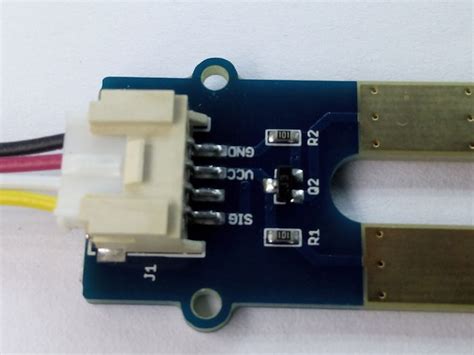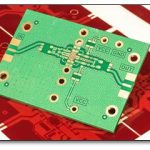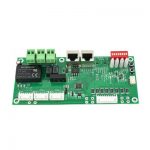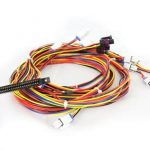Introduction
Welcome to the fifth and final part of our Microcontroller Tutorial series. In the previous tutorials, we have covered the basics of microcontrollers, their components, and how to design a circuit. Now, it’s time to bring everything together by soldering the components onto a printed circuit board (PCB) and programming the microcontroller to bring your project to life.
In this tutorial, we will guide you through the process of soldering the components, setting up the programming environment, and writing the code to control your microcontroller-based project. By the end of this tutorial, you will have a fully functional device ready to be used in your desired application.
Prerequisites
Before we begin, ensure that you have the following:
- A complete microcontroller circuit design (refer to previous tutorials)
- All the necessary components for your project
- A soldering iron and solder
- A computer with the appropriate programming software installed (e.g., Arduino IDE, MPLAB X IDE, or Keil MDK)
- A programming cable or adapter (e.g., USB to serial converter)
Soldering the Components
Safety Precautions
Soldering involves working with high temperatures and molten metal. To ensure your safety and the success of your project, follow these precautions:
- Work in a well-ventilated area to avoid inhaling solder fumes
- Use a soldering iron stand to hold the iron when not in use
- Wear safety glasses to protect your eyes from solder splashes
- Keep flammable materials away from your work area
- Allow the soldered joints to cool before handling the PCB
Soldering Tools and Materials
To solder your components, you will need the following tools and materials:
- Soldering iron (30-50 watts)
- Solder (lead-free, rosin-core, 0.5-0.8mm diameter)
- Soldering iron tip cleaner (brass sponge or steel wool)
- PCboard holder or “helping hands” (optional but recommended)
- Desoldering wick or pump (for correcting mistakes)
- Isopropyl alcohol and cotton swabs (for cleaning the PCB)
Soldering Techniques
Follow these steps to solder your components onto the PCB:
- Clean the soldering iron tip using the tip cleaner to ensure good heat transfer.
- Place the component legs through the designated holes on the PCB, ensuring the component is flush with the board.
- Bend the component legs slightly outward on the opposite side of the PCB to hold the component in place.
- Touch the soldering iron tip to both the component leg and the PCB pad simultaneously.
- Apply solder to the joint, allowing it to melt and flow around the component leg and pad. Use just enough solder to create a small, concave fillet.
- Remove the soldering iron and allow the joint to cool for a few seconds. Avoid moving the component during this time.
- Trim the excess component legs using wire cutters, leaving about 1-2mm of leg protruding from the solder joint.
Repeat these steps for all the components on your PCB. Take your time and ensure each joint is properly soldered before moving on to the next one.
Inspecting Solder Joints
After soldering all the components, inspect each solder joint to ensure it is properly formed. A good solder joint should have the following characteristics:
- Concave fillet shape
- Shiny appearance
- Smooth transition from pad to component leg
- No excess solder or bridging between adjacent pads
If you notice any issues with your solder joints, use desoldering wick or a desoldering pump to remove the solder and try again.

Programming the Microcontroller
With the components soldered onto the PCB, it’s time to program the microcontroller to control your project.
Setting Up the Programming Environment
The programming environment you use will depend on the specific microcontroller you have chosen for your project. Some common programming environments include:
- Arduino IDE (for Arduino-compatible boards)
- MPLAB X IDE (for Microchip PIC microcontrollers)
- Keil MDK (for ARM Cortex-M microcontrollers)
Install the appropriate software on your computer and follow the manufacturer’s instructions to set up the programming environment for your specific microcontroller.
Connecting the Programming Cable
To program your microcontroller, you will need to connect it to your computer using a programming cable or adapter. The specific cable or adapter required will depend on your microcontroller and the programming interface it uses (e.g., USB, ICSP, JTAG).
Refer to your microcontroller’s datasheet or the manufacturer’s documentation to identify the proper programming interface and cable. Connect the cable between your computer and the designated programming pins on your PCB.
Writing the Code
With the programming environment set up and the programming cable connected, you can now write the code to control your microcontroller-based project.
The specific code you write will depend on your project’s requirements and the microcontroller you are using. However, most microcontroller programming follows a similar structure:
- Include necessary libraries and header files
- Define constants and variables
- Set up input/output pins and peripherals in the initialization function
- Implement the main program loop
- Use functions to encapsulate specific tasks or routines
Here’s a simple example of Arduino code that blinks an LED connected to pin 13:
// Define constants
const int LED_PIN = 13;
void setup() {
// Set pin 13 as an output
pinMode(LED_PIN, OUTPUT);
}
void loop() {
// Turn the LED on
digitalWrite(LED_PIN, HIGH);
delay(1000); // Wait for 1 second
// Turn the LED off
digitalWrite(LED_PIN, LOW);
delay(1000); // Wait for 1 second
}
Write your code in the programming environment, ensuring it is free of syntax errors and logical bugs. Use comments to document your code and make it easier to understand and maintain.
Compiling and Uploading the Code
Once you have written your code, you need to compile it and upload it to your microcontroller. The specific steps for compiling and uploading will vary depending on your programming environment and microcontroller.
In general, the process involves the following steps:
- Select the appropriate board and programming port in your programming environment
- Compile the code to check for errors
- If the code compiles without errors, upload it to the microcontroller
- Wait for the upload process to complete
- Reset the microcontroller (if necessary) to start running the uploaded code
Consult your programming environment’s documentation for detailed instructions on compiling and uploading code for your specific setup.
Testing and Debugging
With the code uploaded to your microcontroller, it’s time to test your project and ensure it works as intended.
Power Up the Circuit
Connect a power source (e.g., battery or power supply) to your PCB, ensuring the voltage and polarity are correct. If your microcontroller has an on-board voltage regulator, you may be able to power it directly from the programming cable.
Observe the Behavior
Watch how your project behaves when powered up. Check if the expected inputs (e.g., buttons, sensors) are functioning correctly and if the outputs (e.g., LEDs, motors) are responding as intended.
If your project is not behaving as expected, you may need to debug your code or check your circuit for issues.
Debugging Techniques
Here are some common debugging techniques for microcontroller-based projects:
- Use serial communication to print debug messages from your code
- Employ LED indicators to signal specific points in your code
- Check for loose connections or poorly soldered joints
- Verify the correct wiring of components
- Use a multimeter to measure voltages and continuity
- Review your code for logical errors or incorrect pin assignments
Isolate the issue by testing individual components and code segments. Make changes one at a time and retest to pinpoint the problem.
Finalizing the Project
Once you have tested and debugged your project, it’s time to finalize it for use.
Mounting the PCB
If your project requires an enclosure, design one that fits your PCB and any additional components (e.g., batteries, sensors, actuators). You can create a custom enclosure using 3D printing, laser cutting, or traditional fabrication methods.
Mount your PCB securely within the enclosure, ensuring it is protected from physical damage and environmental factors (e.g., dust, moisture).
Creating Documentation
To make your project easier to understand, maintain, and possibly replicate, create documentation that includes:
- A description of the project’s purpose and functionality
- A schematic diagram of the circuit
- A list of components used
- The code, with comments explaining its operation
- Assembly and usage instructions
Share your documentation with others who may be interested in your project or who may need to maintain it in the future.
Frequently Asked Questions (FAQ)
- What should I do if my solder joint looks dull or bumpy?
-
A dull or bumpy solder joint may indicate a “cold joint,” which is a poor connection. To fix this, reheat the joint with your soldering iron and apply a small amount of fresh solder. If the problem persists, remove the old solder using desoldering wick or a desoldering pump and resolder the joint.
-
How do I know which programming environment to use for my microcontroller?
-
The programming environment you use will depend on the specific microcontroller you have chosen. Consult the microcontroller’s datasheet or the manufacturer’s website to determine the recommended programming environment. Popular choices include Arduino IDE for Arduino-compatible boards, MPLAB X IDE for Microchip PIC microcontrollers, and Keil MDK for ARM Cortex-M microcontrollers.
-
What should I do if my code compiles but doesn’t work as expected on the microcontroller?
-
If your code compiles without errors but doesn’t work as expected when uploaded to the microcontroller, start by double-checking your wiring and connections. Ensure all components are properly soldered and connected to the correct pins. Next, use debugging techniques like serial communication or LED indicators to pinpoint where the issue may lie in your code. Review your code for logical errors, incorrect pin assignments, or timing issues.
-
Can I reuse the same PCB for different projects?
-
While it is possible to desolder components from a PCB and reuse the board for a different project, it is generally not recommended. Desoldering can be time-consuming and may damage the PCB pads or traces. It is often more efficient to design and fabricate a new PCB specific to your new project’s requirements.
-
How can I make my project more robust and reliable?
- To improve your project’s robustness and reliability, consider the following:
- Use high-quality components and PCBs
- Follow best practices for circuit design and PCB layout
- Implement error handling and fail-safe mechanisms in your code
- Protect your project from environmental factors like dust, moisture, and extreme temperatures
- Test your project thoroughly under various conditions and over an extended period
- Regularly maintain and update your project as needed
Conclusion
Congratulations on completing this five-part microcontroller tutorial series! You have learned the basics of microcontrollers, their components, circuit design, soldering, and programming.
By following the steps outlined in this tutorial, you should now have a fully functional microcontroller-based project. Remember to continue learning and experimenting with different project ideas to further develop your skills in this exciting field.
As you gain more experience, you may want to explore advanced topics like wireless communication, sensor integration, or Internet of Things (IoT) applications. The possibilities are endless, and the knowledge you have gained from this tutorial series will serve as a strong foundation for your future projects.
Happy tinkering!






Leave a Reply